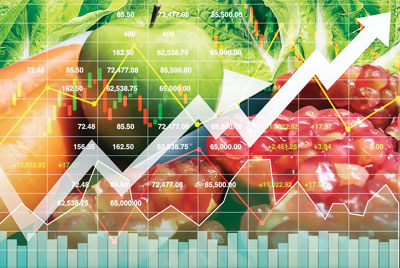Business and Tax Opportunities for the Food and Beverage Industry
By Christopher Martin, CPA, CliftonLarsonAllen LLP –
April 21, 2023

Business owners operating in the food and beverage space have lived through a tumultuous few years. Thinking about what restaurants, supermarkets, and manufacturers and distributors of food products faced between 2020 and today, it is mind boggling that so many of these businesses survived. Those that did shared a common trait: an ability to adapt quickly and decisively. As advisors in this space, CPAs are expected to ensure that clients keep up with, and are ahead of, changes occurring in this industry. Key issues to consider:
Income Taxes, Of Course
Income taxes are a main driver of many of the conversations CPAs engage in with their clients. Key issues to consider:
- Research and development tax credits. There are various avenues for businesses in the food and beverage sector to take advantage of these credits. Opportunities include innovations and changes in food product formulation; new or improved sanitization methods; ingredients and formulations; ERP software implementation for purchasing and shipping; packaging redesign and methods to increase shelf-life; production process changes and efficiencies; and testing to reduce costs and meet regulations.
- Charitable contributions of food inventory. The pandemic resulted in the unpredictability of consumer demand and uncovered supply issues that this sector is still feeling. As a result, companies in the food and beverage space may be left with obsolete or expiring inventory that they can donate to local food pantries or other charitable organizations. By doing so, they can take advantage of an underutilized tax deduction where a business can not only deduct the cost of the food donated but can also receive an additional deduction for a portion of the retail markup they would have received if the inventory was sold at fair market value.
- Last in, first out (LIFO) conversion. In times of rising food costs, it is often beneficial to consider converting inventory valuation from first in, first out (FIFO) to LIFO. LIFO provides a valuation allowance (and tax deduction) in inflationary periods which helps to better match current sales with the related costs. While this is a temporary solution, timing it can be an extremely valuable tool in reducing income taxes in the short term and increasing cash flow for other uses.
Other Business Strategies
There are several other strategies that businesses in the food and beverage space are considering to support increased efficiency, broaden the customer base and cut costs, such as:
- Reassessing pricing strategies. It is often difficult to raise prices on food and beverage products without customer backlash. The last two years have been a period of extremely high inflation, which has a direct impact on the inputs and products that companies are purchasing and utilizing. As such, it is imperative that pricing is changed in a timely manner to match, or get ahead of, those rising costs.
- Diversifying product lines. Not only should pricing models be adjusted, but it is also important to diversify the current line-up with new and innovative products that meet customer taste. In this way, demand can create new revenue streams that will keep the company competitive and even put them ahead of the competition. There may be some research and development (R&D) credits to take advantage of also.
- Leveraging technology. There cannot be a meaningful conversation about gaining efficiency and cutting labor costs (often the top expense line after product costs) without talking about technological innovation. Technology can be utilized to automate manual packaging processes, create more efficient shipping and receiving practices, provide real-time inventory information and aid in formulation of new products. Coming full circle to the income tax conversation, it’s also a great way to invest in the business. Making sure plans are in place to put equipment in service prior to year-end is critical from a timing perspective.
The issues that food and beverage companies face are not always unique to that industry; however, it is vital that advisors in this space continue to be aware of trends and changes to best assist these business owners make the most informed decisions.
 | Christopher L. MartinChris Martin, CPA, CGMA, is a partner in the accounting and auditing practice at CliftonLarsonAllen LLP (CLA), where he works closely with midsize, privately held businesses. He is the vice president of the NJCPA Morris/Sussex Chapter. |
This article appeared in the Spring 2023 issue of New Jersey CPA magazine. Read the full issue.
The information contained herein is general in nature and is not intended, and should not be construed, as legal, accounting, investment or tax advice or opinion provided by CliftonLarsonAllen LLP (CLA) to the reader. For more information, visit CLAconnect.com.
CLA exists to create opportunities for our clients, our people and our communities through our industry-focused wealth advisory, digital, audit, tax, consulting and outsourcing services. CLA (CliftonLarsonAllen LLP) is an independent network member of CLA Global. See CLAglobal.com/disclaimer. Investment advisory services are offered through CliftonLarsonAllen Wealth Advisors, LLC, an SEC-registered investment advisor.